Wireless Network and Communications Research Center
Illinois Institute of Technology Department of Electrical and Computer Engineering.
Publications
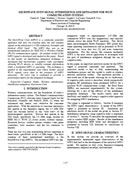 |
Microwave Oven Signal Interference and Mitigation for Wi-Fi Communications Systems Tanim M. Taher, Matthew J. Misurac, Joseph L. LoCicero, Donald R. Ucci, submitted for publication at Military Communications Conference (MILCOM) 2007. |
Abstract- The MicroWave Oven (MWO) is a commonly available
appliance that does not transmit data, but still radiates
signals in the unlicensed 2.4 GHz Industrial, Scientific and
Medical (ISM) band. The MWO thus acts as an
unintentional interferer for IEEE 802.11 Wireless Fidelity
(Wi-Fi) communication signals. An analytic model of the
MWO signal is developed and studied in this paper. Based
on this model, an interference mitigation technique is
developed that incorporates cognitive radio paradigms
allowing Wi-Fi devices to reliably transmit information |
|
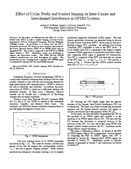 |
Effect of Cyclic Prefix and Symbol Shaping on Inter-Carrier and Interchannel Interference in OFDM Systems Ayham Z. Al-Banna, J. LoCicero, D. Ucci, IEEE Annual Workshop on Workload Characterization (WWC) 2006. |
Abstract—The spectral signature of IEEE 802.11b 11 Mbps Complementary Code Keying (CCK) Wireless Fidelity (Wi-Fi) signals is identified through an exact derivation of its Power Spectral Density (PSD). This theoretical result was verified by computer simulation. The spectral signature of the 11 Mbps CCK-spread signal is compared with that of the 5.5 Mbps CCK spread signal, as well as the Barker-spread signals. The adjacent channel interference power and interference temperature caused by different Wi-Fi interferers are calculated and presented. |
|
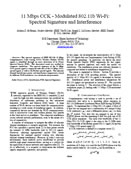 |
11 Mbps CCK - Modulated 802.11b Wi-Fi: Spectral Signature and Interference Ayham Z. Al-Banna, T. Lee, X. Zhou, J. LoCicero, D. Ucci, IEEE International Electro/Information Technology Conference (EIT) 2006. |
Abstract- Some devices not used for data communications radiate in the 2.4 GHz Wireless-Fidelity (Wi-Fi) band, thus causing unintentional interference that degrades the performance of IEEE 802.11 wireless systems. An analytical model for radio emissions from one of the most common unintentional interferers, the residential microwave oven, is developed from laboratory measurements. Simulation of the analytical model results in a power spectral density and spectrogram that are in good agreement with experimental data. An interference mitigation technique is proposed for the microwave oven emission. |
|
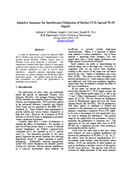 |
Adaptive Antennas for Interference Mitigation of Barker/CCK Spread Wi-Fi Signals Ayham Z. Al-Banna, J. LoCicero, D. Ucci , IEEE Conference on Local Computer Networks (LCN) 2006. |
Abstract- A study of interference caused by adjacent IEEE 802.11 Barker-code spread and Complementary Code Keying spread Wireless Fidelity signals used in Wireless Local Area Networks is presented. The interference resulted from these signals is thoroughly analyzed and compared to that caused by bandlimited flat spectral interferers as well as narrow band interferers. Adaptive antennas employing tappeddelay- lines are used to mitigate the interference effect from these signals. The optimal values for the delayline parameters to restore the performance at minimum cost are found. |
|
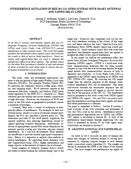 |
Interference Mitigation in IEEE 802.11g OFDM Systems with Smart Antennas and Tapped Delay Lines, Ayham Z. Al-Banna, J. LoCicero, D. Ucci, Military Communications Conference (MILCOM) 2006. |
Abstract—In an 802.11 wireless environment, signals that use Orthogonal
Frequency Division Multiplexing (OFDM) and
OFDM with Cyclic Prefix Code (OFDM-CPC) present
interference to other wireless users. This work thoroughly
analyzes the interference these signals cause and contrasts
the results to that of narrow band interferers. Smart antennas
with tapped-delay-lines are used to mitigate the |
